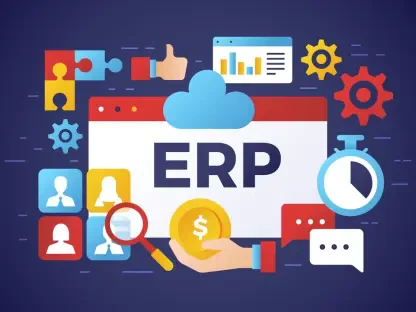The debate over the best storage option for blockchain activities has intensified as the industry grows. As data and transaction volumes surge, the stakes for secure, scalable, and practical storage solutions are higher than ever. This article dissects the merits and drawbacks of cloud and local storage options for blockchain security, providing an in-depth exploration of their implications for decentralization, usability, and long-term data integrity.
Understanding Storage Options
Blockchain technology can utilize various storage methods, each with its unique strengths and weaknesses. Cloud computing and local storage dominate this conversation, and understanding their nuances is crucial for making an informed decision.
Cloud computing stores data on remote servers, enabling flexibility and scalability for users, making it an attractive option for businesses that require vast amounts of storage without the significant upfront investment linked to physical hardware. The primary advantage here is the ease of access and the capability to handle large volumes of data efficiently. However, cloud services come with inherent security and privacy concerns, given that data is managed by third-party providers.
Conversely, local storage involves physical devices like hard drives, granting users full control over their data. This method minimizes third-party risks and offers faster access times. Nonetheless, it is not without its own set of challenges. Local storage can be costly in terms of both initial investment and ongoing maintenance. Additionally, it poses scalability limitations, which can be a significant drawback as data and transaction volumes increase.
The Role of Blockchain Storage
Blockchain storage leverages decentralized networks to enhance data security and immutability, positioning itself as a transformative approach to data management. By distributing data across a network of nodes, blockchain reduces risks associated with central breaches and ensures consistent data integrity, a crucial factor for blockchain-driven businesses and crypto enthusiasts.
Solutions like Filecoin and Arweave stand out in this regard, offering purpose-built alternatives to traditional cloud and local storage methods. These platforms utilize decentralized protocols to store data, enhancing immutability and security. This middle-ground approach blends the benefits of both cloud and local storage, though it comes with its complexities, such as limited capacity and the need for a deeper technical understanding.
Blockchain’s decentralized nature inherently provides a safeguard against data breaches and unauthorized access, fostering an environment of trust and integrity. These attributes are especially pertinent for entities that prioritize maintaining long-term data integrity and security over more conventional storage methods.
Blockchain Nodes Explained
Nodes are the backbone of blockchain networks, responsible for storing and validating transaction data. They can be categorized into full nodes and light nodes, each serving distinct purposes and requiring different resources.
Full nodes play a critical role in maintaining the entire blockchain history, making them essential for decentralized verification of transactions. These nodes demand significant storage capacities—approximately 700 GB for Bitcoin and over 1 TB for Ethereum—highlighting their resource-intensive nature. Despite the substantial requirements, full nodes offer unmatched security and transparency, ensuring transactions are independently verified without relying on third-party services.
Light nodes, on the other hand, provide a more storage-efficient alternative. They store less data compared to full nodes and rely on the latter for extended functionality and security. While this reduces the storage burden, it also introduces a certain level of dependency on full nodes for complete transaction validation, potentially impacting decentralization.
Local Storage: The Decentralized Ideal
Running a blockchain node via local storage affords complete control and reduces third-party risks, making it an attractive option for those committed to the decentralized ethos of blockchain technology. By eliminating the reliance on external providers, local storage methods significantly enhance data privacy and control.
However, this setup is not without its challenges. Local storage demands substantial technical resources and ongoing maintenance efforts, creating barriers for those without the necessary expertise or infrastructure. Users must be prepared to handle issues related to hardware maintenance, software updates, and ensuring continuous uptime, all of which can be resource-intensive and complex.
For those with the capability to manage local storage efficiently, it exemplifies the highest level of data control, making it the ideal choice for blockchain enthusiasts and validators. This method aligns closely with blockchain’s foundational principle of decentralization, minimizing vulnerabilities tied to third-party involvement.
Cloud Computing for Scalability
Cloud computing offers a practical alternative for those looking to quickly scale their blockchain operations. Platforms such as Google Cloud and AWS provide scalable infrastructure, simplifying node setup through pre-configured images or managed services. This ease of deployment allows users to focus more on developing applications rather than managing underlying hardware and software.
The scalability and convenience offered by cloud computing are undeniable. It enables businesses and developers to rapidly respond to changing demands, adding or removing resources as needed without substantial upfront costs. However, this approach introduces a trade-off in the form of centralization risks. Dependence on third-party providers for data storage and management contrasts with the decentralized philosophy that underpins blockchain technology.
Reliability is another significant advantage of cloud computing. These platforms boast global data centers with redundancy systems to ensure high availability and mitigate risks of downtime. Nonetheless, the security and privacy concerns associated with third-party data management remain a critical consideration for users prioritizing data integrity and control.
Evaluating Storage Solutions
Choosing the right storage solution for blockchain security hinges on various factors, including security priorities, resource availability, and operational needs. Local storage is appealing for those who prioritize control and decentralization, but it comes with higher upfront costs and demanding maintenance requirements. Conversely, cloud storage offers scalability and convenience but at the expense of potential centralization and recurring costs.
When evaluating storage solutions, factors such as the initial investment in infrastructure versus the ongoing operational costs need careful consideration. While local storage may seem more expensive initially, it eliminates recurring expenses associated with cloud services. Cloud solutions, often presented as budget-friendly due to their pay-as-you-go model, can accumulate significant costs over time, especially for extensive blockchain operations.
Maintenance responsibilities also play a crucial role in this decision. Local storage requires users to take full responsibility for hardware upkeep, software updates, and system security. This can be particularly challenging without the necessary technical expertise. On the other hand, cloud providers offer managed maintenance and technical support, easing the burden on users but introducing dependencies on third-party services.
Emerging Alternatives
Blockchain-based storage solutions like Filecoin and Arweave present innovative approaches to data security and longevity. By distributing data across a network of nodes, these platforms enhance immutability and safeguard against breaches.
Filecoin incentivizes users to provide storage capacity, using blockchain technology to create a decentralized storage market. Similarly, Arweave focuses on permanent data storage, ensuring long-term availability and integrity of archived information. These alternatives are particularly suited for storing infrequently accessed data, like transaction records or smart contract codes, where immutability and tamper resistance are paramount.
However, while these decentralized solutions offer significant security advantages, they can be complex to implement and may not be as efficient for real-time data access compared to cloud storage. High-frequency, immediate access needs might still find cloud storage to be more practical due to its reliability and performance.
Trends and Trade-offs
The tension between decentralization and scalability is evident in the blockchain storage debate. Full decentralization aligns with the core principles of blockchain technology but requires substantial resources and technical expertise. Cloud solutions, while democratizing access to blockchain, introduce centralization risks and potential security concerns.
Hybrid models that combine the strengths of local and cloud storage are increasingly gaining traction. These models leverage local storage for privacy-sensitive operations and decentralized control, while employing cloud infrastructure for scalable needs or archival purposes. This approach offers a balanced solution, merging ease of access and reliability of cloud services with the control and security of local storage.
The move towards hybrid solutions reflects a growing consensus that a one-size-fits-all approach is insufficient for diverse blockchain applications. By integrating multiple storage methods, users can optimize their blockchain deployments according to specific needs and constraints.
Making an Informed Decision
Ultimately, the decision between cloud and local storage for blockchain security is highly contextual. Users must assess their specific needs, technical skills, and commitment to decentralization to choose the most suitable storage option.
For blockchain enthusiasts and validators with the resources to support local storage, this method aligns closely with blockchain’s foundational principles, offering the highest level of control and security. Developers and businesses, on the other hand, might prefer the scalability and cost-effectiveness of cloud solutions, which enable rapid deployment and flexible scaling without significant infrastructure investment.
Considering emerging technologies and hybrid models can also provide a middle ground, balancing the benefits of decentralization with the practical advantages of cloud computing. As the blockchain ecosystem continues to evolve, storage solutions will likely become more sophisticated, offering increasingly tailored options to meet diverse needs.
Conclusion
The ongoing debate regarding the most effective storage solution for blockchain operations has become increasingly intense as the industry continues to expand. With the rise in data and transaction volumes, the need for storage solutions that are secure, scalable, and practical is more critical than ever before. This article aims to provide a comprehensive analysis of the advantages and disadvantages associated with both cloud and local storage in the context of blockchain security. By examining these storage options, we delve into their impact on decentralization, which is a fundamental principle of blockchain technology. Additionally, we assess the usability of these storage methods and their implications for maintaining long-term data integrity. These factors are crucial for ensuring that the chosen storage solution can effectively support the growing demands of blockchain activities while preserving the security and functionality of the system. Therefore, users and developers in the blockchain community must carefully consider these storage options to make informed decisions that will impact the future of blockchain technology.









